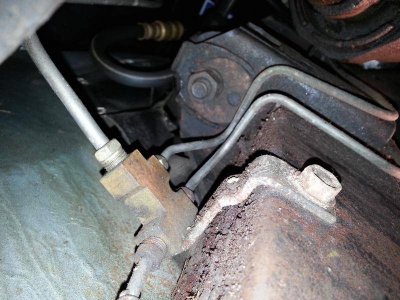SF-66TC
Well-Known Member
I can not get any information from the last owner as to what he switched and from what years the parts are from. I believe it was a single circuit manual drum/drum, there is no wire going to that area for the switch, and no brake warning light inside. Could a wire be added from my valve switch to my parking brake light on the inside
I am still uncertain as to what I have ,is it a distribution block or a proportioning valve. If it is just a distribution block then I could add a proportioning valve. If it is already a proportioning valve ,then I will just add the disc/drum master cylinder
Does a proportioning valve go after the distribution block or before it
Looking over your photos and description I assume your car originally came with Power Brakes, Single Master Cylinder, Single Distribution Block (like my attached photo) and drum/drum brakes.

The PO then -
1. upgraded the front drums to disc brakes
2. installed a drum/drum master (looks to be the A1-Cardone 101323 which is wrong for your setup)
3. and changed the original distribution block to a later model type when he did the change from a single circuit master to a dual circuit master
4. That also explains why the current distribution block has the warning light switch on it and your car does not have a hook up for it.
So again -
1. change the master cylinder to the correct disc/drum mc
2. install a prop valve
3. DONE


















